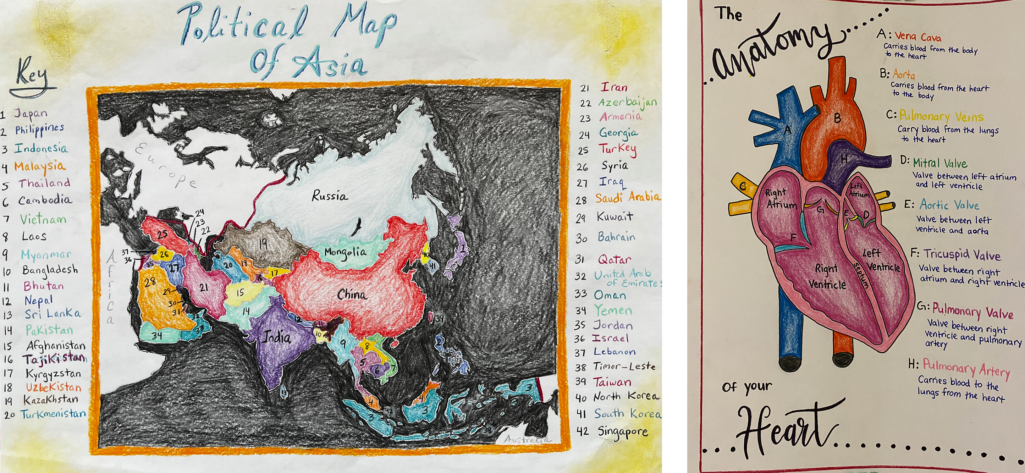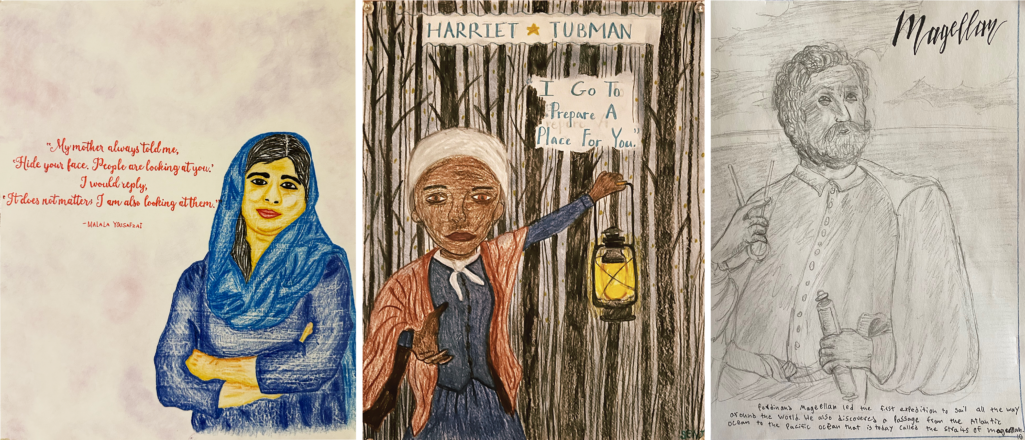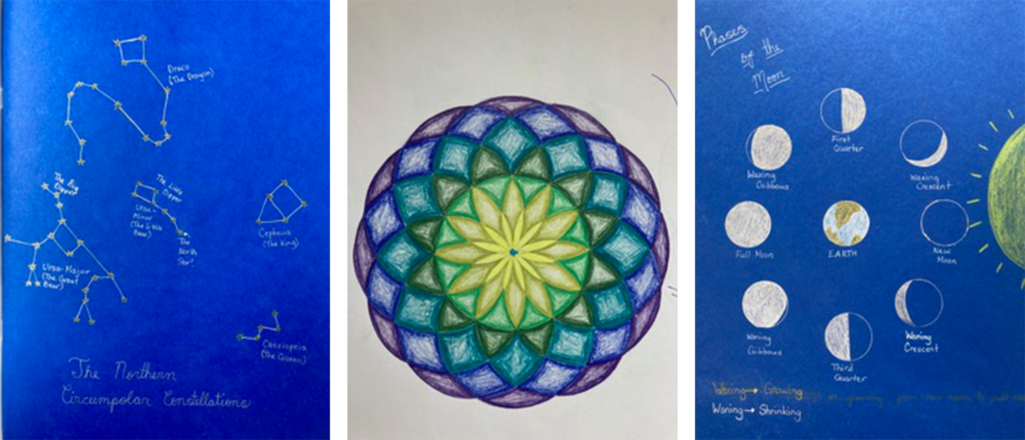The Waldorf curriculum has been intentionally designed to provide a well-rounded education. Students engage in a wide range of subjects, including mathematics, science, language arts, history, and geography. One aspect that sets Waldorf Education apart, however, is its commitment to integrating artistic activities into every aspect of learning. This has led to the misconception that Waldorf schools are only for “artistic students” or are “art schools.” However, the Waldorf curriculum does not include art classes in the manner of most other schools; rather, it’s about enlivening all subjects with artistic means to create joyful, rich, and engaging learning experiences for students.
In Waldorf Education, art is not a separate or optional activity; it is an essential tool for teaching and learning. Through artistic activities, such as drawing, painting, music, and theater, students actively engage with academic subjects in a way that makes learning come alive. For example, when studying history, students might create historical plays or artistic projects that allow them to immerse themselves in the time period being studied. This hands-on approach not only deepens their understanding but also makes the learning experience more enjoyable.


Art in Waldorf Education plays a crucial role in fostering creativity and imagination. By encouraging students to express themselves through various artistic media, they develop the ability to think outside the box, problem-solve, and explore their individuality. This creative spirit extends beyond the art studio and into all aspects of their lives. Students learn to approach challenges with innovative solutions, and they are better prepared for a world that increasingly requires adaptability and creative thinking.
Critics might argue that an emphasis on art could lead to less rigor. However, this is far from true in Waldorf Education. The curriculum is academically challenging and aims to prepare students for a broad range of future endeavors. An artistic approach enhances academic learning by making complex concepts more accessible and engaging. For example, in mathematics, students might use artistic patterns and designs to better understand abstract concepts. In science, they might draw and label intricate diagrams to understand biological processes. The artistic elements provide a concrete and imaginative connection to abstract ideas, making them easier to grasp and recall.


Susquehanna Waldorf School’s strong commitment to academic excellence and deep appreciation for the role of art in learning are perfectly paired. This results in a nurturing environment where students flourish academically and artistically.
The role of art in Waldorf Education is not merely an add-on or extracurricular activity; it is a fundamental hallmark of the curriculum. By incorporating art into all subjects, we empower students to become creative, critical thinkers while maintaining a rigorous academic program. In this holistic approach to education, the arts are not just a means of expression but a powerful tool for unlocking the full potential of each student. Waldorf Education serves as a reminder that nurturing a child’s creativity and imagination is just as important as developing their academic abilities, and the two are beautifully intertwined on the path of learning.


